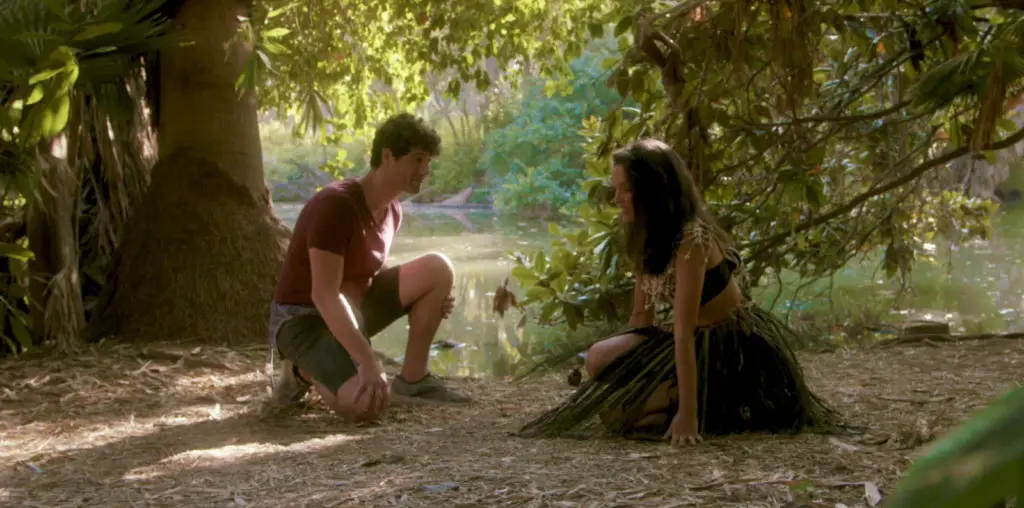
Mark Twain is purported to have remarked that everyone talks about the weather while nobody does anything about it. What an enviable thing it seems looking back on his time to have lived in an age when the notion of doing
something about the weather was nothing more than a punchline. The joke, many scientists today suggest, is on us. Decades of pollution and environmental abuse may well have disrupted the planet’s delicate weather patterns and yet, while many of the world’s nations have begun to address threats like global warming, the government of the United States refuses to do anything about it.
This essentially is the premise of Roland (Independence Day) Emmerich’s latest extravaganza. The Day After Tomorrow stars Dennis Quaid as a paleoclimatologist whose prediction that global warming will lead to a new ice age is dismissed by the US administration. More accurately, it is dismissed by its vice president, played by an actor who bears an uncanny (and, my research indicates, intentional) resemblance to Dick Cheney.
To be fair, Quaid’s science is not entirely on the money. At a conference in New Delhi, he warns that disaster could strike “in a hundred years or in a thousand years.” Is his face red when, in fact, it strikes a few days
later.
The picture’s climate-related apocalypse unfolds with absurd swiftness. One minute, a chunk of glacier is breaking off and slipping into the ocean. The next, snow is beginning to fall on India, jagged hunks of deadly hail are bombarding Tokyo, turbulence is spitting jumbo jets out of the sky and a herd of tornadoes is stampeding into Los Angeles. Only in LA would a reporter stand in front of a twister and file an on camera report as landmarks are blown to smithereens just yards away. And, only in a movie like this, would the loss of the Hollywood sign be mourned and the deaths of billions of human beings barely mentioned.
Notice I called the swiftness with which the apocalypse unfolds absurd and not comical. The CGI-powered cataclysms are indeed spellbinding for the most part despite the plot’s colossal inanity. Next to the script-cowritten by Emmerich and Jeffrey Nachmanoff-the story lines for cheesathons like The Towering Inferno look Shakespearean in their depth and subtlty.
Quaid’s paleoclimatologist is estranged from a doctor played by Sela Ward. They live in Washington DC and have a son portrayed by Jake Gyllenhaal. He leaves on a school trip to New York City just as all eco-hell breaks loose and, aside from half the planet turning into a popsicle, the story pretty much consists of Quaid walking from the capitol to Manhattan in order to search for him. Something he manages in just two to three days even though the snow’s so deep in places that only the tips of skyscrapers peek through it and blizzards howl with subzero rage.
Which, I suppose, is not a lot whole lot sillier than the idea that a new ice age could take hold in about the same amount of time. Or goofier than some of the lines the actor’s forced to deliver. Quaid’s ability to get them out with a straight face should by itself qualify him for Oscar consideration.
The effects, which accounted for 40 to 50 of the 125 million dollars it cost to make the movie, certainly are the only reason to see The Day After Tomorrow even if we’ve seen variations on many of them before. Much of the
Manhattan havoc, for example, looks as though it was left over from Independence Day. The tidal wave that washes over the Big Apple doesn’t look significantly different from the one that did the same in Deep Impact. A number of under water shots of the metropolis reminded me of similar shots in A. I. LA’s Capital Records building has been decimated regularly over the past 30 years all the way back to the original disaster film, 1974’s Earthquake. The twisters, let’s face it, look like the twisters in Twister. And consider how much punishment
the Statue of Liberty has absorbed in picture after picture in pursuit of eyepopping cinema. It’s eerie to see the monument frozen here but, as yet, nothing has topped the shock of seeing it poke through the beach at the close of Planet of the Apes.
Without a doubt, though, the most remarkable effect is the one the film and its warming warning have had on the White House. Top ranking members of the Bush administration-which rejected the Kyoto Treaty-actually ordered
NASA scientists not to comment publically on the picture or its implications. Perhaps the president was under the misimpression it was directed by Michael Moore and not the guy who gave us Godzilla.
Which, I have to wonder, is sillier: A movie about an instant ice age or a chief executive worried that it might spell disaster for him?


